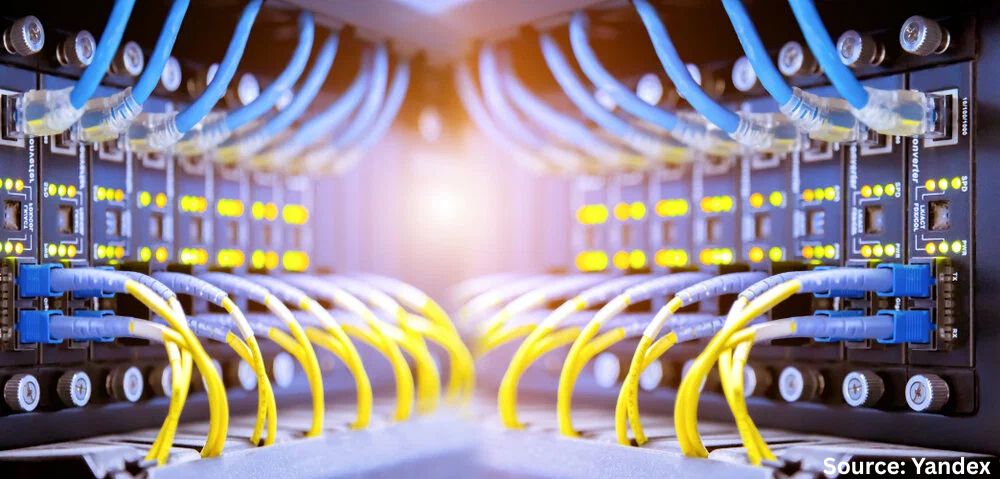
Rugged Military Computers Market by Component (Hardware (Processor, Input/Output Devices and Others), Software (Operating System and Others), and Services), by Product Type (Rugged Laptops, Rugged Tablets, and Others), by Application (Command and Control Systems, Communication Systems, Combat and Tactical Operations, Intelligence, Surveillance, and Reconnaissance (ISR) Systems and Others)), and by End Users (Army, Navy and Air Force)–Global Opportunity Analysis and Industry Forecast 2025-2030
US Tariff Impact on Rugged Military Computers Market
Trump Tariffs Are Reshaping Global Business
Rugged Military Computers Industry Overview
The global Rugged Military Computers Market size was valued at USD 4.84 billion in 2024, and is expected to be valued at USD 5.11 billion by the end of 2025. The industry is projected to grow further, hitting USD 6.95 billion by 2030, with a CAGR of 5.6% between 2025 and 2030.
The market is undergoing substantial evolution, driven by a surge in global defense expenditure, a heightened emphasis on enhanced situational awareness and data-centric operations, and continuous technological advancements in rugged computing systems.
As modern military operations increasingly rely on real-time intelligence, surveillance, and reconnaissance (ISR), the demand for mission-critical hardware that can operate in extreme environments has intensified. These robust systems are being integrated into defense strategies to enable secure communication, rapid decision-making, and improved operational effectiveness. The rise in defense budgets globally has propelled investments in high-performance, durable devices that align with evolving military requirements.
Additionally, the focus on achieving real-time battlefield awareness across multi-domain operations has accelerated the adoption of rugged computing platforms. However, the market faces a significant restraint in the form of high costs associated with the development, manufacturing, and procurement of fully rugged, military-grade systems, which can hinder adoption in budget-constrained environments.
Despite this, promising opportunities exist in offering customized rugged solutions tailored to specific defense needs and applications, positioning industry players to expand their footprint and capitalize on the growing demand for adaptable, mission-specific computing infrastructure.
Surge in Defence Expenditure Propels the Rugged Military Computers Market Growth
The relentless demands of modern military operations are a fundamental driving force behind the growth of the rugged military computers market. Military personnel operate in a vast array of challenging environments, from extreme temperatures and humidity to dusty and vibration-prone conditions. These are specifically designed to endure harsh industrial environments and comply with MIL-STD-810G standards for drops, shocks, and falls, while its IP65 rating protects against water and dust. This need for reliable performance in unpredictable and hostile settings is a primary reason why the market for rugged devices remains strong.
The Increasing Emphasis on Enhanced Situational Awareness and Data-Centric Operations Fuelling the Need for Robust Computing
The increasing emphasis on enhanced situational awareness and data-centric operations is another significant catalyst for the market. Modern warfare relies heavily on the collection, processing, and dissemination of vast amounts of data in real-time, often at the tactical edge of the battlefield. Rugged embedded computers play a crucial role in enabling technologies for unmanned military systems and autonomous capabilities, requiring high-performance electronics in ultra-compact form factors.
Effectively harnessing and exploiting sensor data directly at the edge is critical due to latency, bandwidth, and security considerations, making small and rugged-edge computers the solution for tactical AI edge processing. The integration of artificial intelligence (AI) into rugged devices further amplifies this need, enabling real-time data analysis and decision-making directly in the field.
Technological Advancement in Rugged Military Computers Further Boosts the Market Growth
Continuous advancements in commercial technology are significantly influencing the rugged military computers market demand. Instead of developing rugged computers entirely from scratch, the current trend involves ruggedizing commercially developed technology to meet military specifications. This approach allows the military to leverage the rapid pace of innovation in the commercial sector, including advancements in processing power, AI capabilities and connectivity.
For instance, in September 2023, MilDef launched a rugged Panel PC that comes with an optional removable computer module for maximum operational flexibility when used in the military. While this offers benefits in terms of performance and cost-effectiveness compared to bespoke military designs, it also necessitates careful engineering to ensure these commercial components can withstand the rigors of military use, particularly regarding shock, vibration, temperature, and contaminants.
The Significant Cost Associated with Developing, Manufacturing, and Procuring Fully Rugged Military-Grade Devices Restrains the Growth of the Market
One of the primary restraints in the rugged military computers market expansion is the significant cost associated with developing, manufacturing, and procuring fully rugged military-grade devices. The specialized materials, engineering, and testing required to meet stringent MIL-SPEC standards and ensure durability in extreme conditions contribute to higher prices compared to commercial-grade computers. This cost factor can influence procurement decisions and the scale at which ruggedized technology is deployed, particularly in large-scale military operations.
Customized Rugged Solutions Tailored to the Specific Needs and Applications Offer Promising Opportunities for Market Expansion
A significant opportunity for players in the market lies in providing customized rugged solutions tailored to the specific needs and applications of different military branches and units. Recognizing that each military operation and environment presents unique requirements regarding reliability, performance, and durability, manufacturers are increasingly offering customization options.
This can involve tailoring features such as display types, connectivity options, battery life, and specialized interfaces to meet mission-specific demands. Core Systems, for example, offers custom design and engineering services for rugged product development, indicating a focus on meeting individual customer requirements. By offering adaptable and rugged computing solutions, companies can better address the diverse needs of the military and gain a competitive edge in this specialized market.
Market Segmentation and Scope of the Study
The rugged military computers market report can be segmented on the basis of component, product type, application, end users and region. On basis of component, the market is further divided into hardware, software and services. Based on hardware the market is bifurcated into processors, input/output devices, and others. Based on software, the market is segmented into operating systems and application software. In terms of product type, the market is divided into rugged laptops, rugged tablets, rugged displays, and rugged handhelds. On the basis of application, the market is divided into command-and-control systems, communication systems, combat and tactical operations, and intelligence, surveillance, reconnaissance (ISR) systems, and others. On the basis of the end users the market is divided into army, navy, and air force. Regional breakdown and analysis of each of the aforesaid segments includes regions comprising of North America, Europe, Asia-Pacific, and Rest of The World (Row).
Geographical Analysis
In North America, the market is heavily driven by the strong presence and evolving needs of the military and defense sectors. The demand for highly durable, mission-critical computing devices that comply with stringent military standards such as MIL-STD-810G and MIL-STD-461H plays a pivotal role in market growth. Leading companies like Dell, with its Latitude Rugged series, and Panasonic with its Toughbook line, dominate this space.
The U.S. Department of Defense continues to prioritize ruggedized solutions for field operations, logistics, and combat-readiness applications. According to the Aerospace Industries Association, the U.S. defense and aerospace industry generated nearly USD 955 billion in revenue in 2023, reflecting a 7.1% increase from 2022. Key military trends shaping this market include the integration of artificial intelligence (AI) for predictive equipment maintenance, real-time battlefield analytics, and the implementation of 5G connectivity to support high-speed communication and data transfer in mission-critical environments.
In Europe, the rugged device market share is also significantly influenced by military and defense applications. European armed forces demand ruggedized computing solutions for deployment in harsh terrains and diverse operational scenarios, from Arctic conditions to desert environments.
Compliance with strict defense and safety certifications, including ATEX standards for explosive atmospheres, is essential. Companies like Durabook cater to the unique requirements of European defense organizations, offering devices with features such as hot-swappable batteries, biometric security, and extended temperature resistance. The European defense sector’s emphasis on cybersecurity, secure data storage, and battlefield-ready mobile computing has fostered increasing demand for customized rugged devices tailored to specific military missions and tactical needs.
The Asia-Pacific region is witnessing rapid growth in the military use of rugged devices, spurred by increasing defense investments and technological modernization across countries like China and India. China, according to the 2024 Lowy Institute Asia Power Index, scored 69.7 in military capability, marking a 4.3% rise since 2021. This enhancement in defense capacity has been accompanied by a growing need for rugged laptops and tablets suited for use in harsh military conditions, including border surveillance, command centers, and mobile field units.
Likewise, India's defense manufacturing industry is expanding swiftly, with 2023 output reaching USD 12.82 billion and exports amounting to USD 1.36 billion, as per the Ministry of Commerce and Industry. Global and regional players such as Winmate and Getac are supplying rugged devices optimized for military use, with trends highlighting increased adoption of Android-based platforms for secure, cost-effective deployment in tactical field applications.
In the Rest of the World encompassing Latin America, the Middle East, and Africa the rugged device market shows promising growth potential driven by military modernization initiatives. In Latin America and Africa, rugged devices are increasingly adopted for border patrol, peacekeeping operations, and remote surveillance tasks, where environmental durability is essential due to dust, heat, and unpredictable terrain.
The Middle East, particularly in countries investing in strategic defense capabilities, has demonstrated strong demand for rugged computing systems in desert warfare and infrastructure defense, where compliance with hazardous environment certifications is critical.
While overall military expenditure in these regions may be smaller compared to more developed markets, the increasing focus on mobility, secure communication, and real-time data access in field operations is likely to sustain the upward trend in rugged device deployment for military applications.
Pioneering the Battlefield: Strategic Innovations in the Industry
Key players in the global rugged military computers industry are strategically focusing on integrating cutting-edge technologies like artificial intelligence (AI) and edge computing to enhance battlefield capabilities. Companies such as Getac are introducing AI-ready rugged laptops, reflecting a market trend towards smarter, more autonomous systems. Durability remains paramount, with adherence to stringent military standards like MIL-STD-810H and high IP ratings continuing to be a core requirement. For instance, Winmate's rugged tablets are designed to withstand harsh industrial and even military environments, complying with MIL-STD-810G and IP65 standards.
Simultaneously, there's a growing demand for customized solutions to meet specific operational needs, as seen in Panasonic's Toughbook 40 with its modular design for user-upgradable features. A significant challenge lies in balancing the increasing demand for high-performance computing and advanced features with the strict limitations on size, weight, and power (SWaP) in military applications, alongside the crucial need for effective thermal management in sealed, rugged enclosures.
However, these challenges also present opportunities for innovation in areas like advanced cooling solutions and power-efficient processing. The push towards open systems architecture like SOSA aims to improve interoperability and facilitate rapid technology insertion, offering further avenues for growth and collaboration within the industry size. Ultimately, the growth potential of this market is tied to the continuous modernization efforts of global defense forces and their increasing reliance on data-driven, real-time tactical information.
Key Benefits
-
The report provides quantitative analysis and estimations of the market from 2025 to 2030, which assists in identifying the prevailing market opportunities.
-
The study comprises a deep dive analysis of the current and future rugged military computers market trends to depict prevalent investment pockets in the market.
-
Information related to key drivers, restraints, and opportunities and their impact on the rugged military computers sector is provided in the report.
-
Competitive analysis of the players, along with their market share is provided in the report.
-
SWOT analysis and Porters Five Forces model is elaborated in the study.
-
Value chain analysis in the market study provides a clear picture of roles of stakeholders.
Rugged Military Computers Market Key Segments
By Component
-
Hardware
-
Processor
-
Input/Output Devices
-
Others
-
-
Software
-
Operating System
-
Application Software
-
-
Services
By Product Type
-
Rugged Laptops
-
Rugged Tablets
-
Rugged Displays
-
Rugged Handhelds
By Application
-
Command and Control Systems
-
Communication Systems
-
Combat and Tactical Operations
-
Intelligence, Surveillance, and Reconnaissance (ISR) Systems
-
Others
By End Users
-
Army
-
Navy
-
Air Force
By Region
-
North America
-
The U.S.
-
Canada
-
Mexico
-
-
Europe
-
The UK
-
Germany
-
France
-
Italy
-
Spain
-
Denmark
-
Netherlands
-
Finland
-
Sweden
-
Norway
-
Russia
-
Rest of Europe
-
-
Asia Pacific
-
China
-
Japan
-
India
-
South Korea
-
Australia
-
Indonesia
-
Singapore
-
Taiwan
-
Thailand
-
Rest of Asia Pacific
-
-
RoW
-
Latin America
-
Middle East
-
Africa
-
Key Players
-
Getac Technology Corp
-
Panasonic Connect
-
Winmate Inc.
-
Avza Tech.
-
Dell Inc.
-
Twinhead International Corp.
-
Acer Inc.
-
Valano Technology (Dongguan) Co., Ltd.
-
Firehawk
-
Vista Consoles Electronics Pvt Ltd.
-
Cevians
-
ArgonFDS
-
Core Systems
-
Mercury Systems, Inc.
-
ADLINK Technology Inc.
REPORT SCOPE AND SEGMENTATION:
|
Parameters |
Details |
|
Market Size in 2024 |
USD 4.84 Billion |
|
Revenue Forecast in 2030 |
USD 6.95 Billion |
|
Growth Rate |
CAGR of 5.6% from 2025 to 2030 |
|
Analysis Period |
2024–2030 |
|
Base Year Considered |
2024 |
|
Forecast Period |
2025–2030 |
|
Market Size Estimation |
Billion (USD) |
|
Growth Factors |
|
|
Countries Covered |
28 |
|
Companies Profiled |
15 |
|
Market Share |
Available for 10 companies |
|
Customization Scope |
Free customization (equivalent up to 80 working hours of analysts) after purchase. Addition or alteration to country, regional, and segment scope. |
|
Pricing and Purchase Options |
Avail customized purchase options to meet your exact research needs. |

















 Speak to Our Analyst
Speak to Our Analyst




















